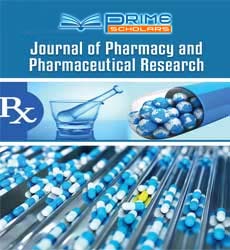Commentary - (2023) Volume 7, Issue 1
Understanding the Safety Evaluation of New RNA Therapeutics
Martina Sisi*
Department of Pharmacy, University of Federal, Brazil
*Correspondence:
Martina Sisi,
Department of Pharmacy, University of Federal,
Brazil,
Email:
Received: 01-Mar-2023, Manuscript No. IPIPR-23-16168;
Editor assigned: 03-Mar-2023, Pre QC No. IPIPR-23-16168 (PQ);
Reviewed: 17-Mar-2023, QC No. IPIPR-23-16168;
Revised: 22-Mar-2023, Manuscript No. IPIPR-23-16168 (R);
Published:
29-Mar-2023, DOI: 10.21767/IPIPR.23.7.006
Description
Over the past decades, RNA therapeutics has pioneered broad
medical applications in rare diseases associated with gene expression
and in vaccines to combat the SARS-CoV-2 virus. The exclusive
target specificity of RNA therapeutics modulates the translation of
disease-causing proteins through downregulation of gene targets
or by injecting synthetic mRNAs to translate the encoded target
proteins can provide significant advantages over conventional
drugs. Most of them were previously thought to be incompatible
with other established drugs, including small molecules and antibodies.
RNA therapeutics differs from conventional drugs in terms of their
pharmacological mechanism of action and pharmacokinetic properties.
Understanding their absorption, distribution, metabolism,
and excretion is critical for the development and safety evaluation
of new RNA therapeutics. Insight into these properties is important,
as most approved RNA therapeutics or candidates have similar
modifications in their RNA structure and may exhibit similar ADME
processes. RNA therapeutics is oligonucleotides composed of RNA
bases (adenine, cytosine, guanine, uracil). Each base is connected
to a phosphate backbone that provides structural support to the
strand. RNA therapeutics demonstrates their therapeutic efficacy
by binding to specific sites in premature RNA via Watson-Crick base
pairing. Based on their structure, RNA therapeutics can be classified
as antisense oligonucleotides and aptamers. FDA approved
mRNA vaccines are not covered in this review due to the lack of
conventional pharmacokinetic studies. Historically, pegaptanib was
the only aptamer-based drug approved by the FDA. Pegaptanib,
RNA aptamer, inhibits Vascular Endothelial Growth Factor (VEGF)
and has been used to treat age-related macular degeneration.
However, with the development of more effective treatment options
such as ranibizumab, its use began to decline and eventually
its marketing was discontinued.
Defibrotide, a polydisperse mixture of single and double-stranded oligonucleotides of variable length and sequence composition, was
the first RNA drug approved in 2016 and is derived from porcine
intestinal mucosa. Approved for the treatment of venous-occlusive
disease of the liver, it may protect the cells lining blood vessels
in the liver and prevent blood from clotting. It has multiple complex
mechanisms of action with anti-ischemic and anti-thrombotic
properties.
RNA therapeutics interacts with RNA targets in the cytosol or cell
nucleus. However, the hydrophobicity of cell membranes limits the
ability of RNA therapeutics to diffuse from the blood into peripheral
tissues. Therefore, therapeutic uptake of RNA requires different
cellular internalization pathways. Effective cellular internalization
requires balanced plasma protein binding. Too tightly bound RNA
therapeutics to plasma proteins can interfere with tissue distribution
from the systemic circulation. In contrast, drugs that are weakly
bound to plasma proteins are cleared more rapidly, mainly by
blood metabolism or urinary excretion.
Drawbacks of RNA therapeutics have been related to their stability,
rapid degradation, and delivery to target cells. As already mentioned
modifications to the RNA backbone structure have made
it possible to improve stability and prevent rapid degradation. In
addition, various delivery systems have been introduced that cross
lipid bilayers and protect against degradation using lipid or polymer-
based systems. Alternatively, interactions caused by manipulation
of gene expression may remain relevant after treatment with
RNA therapeutics.
Acknowledgement
The author is grateful to the journal editor and the anonymous reviewers
for their helpful comments and suggestions.
Conflict of Interest
The author declared no potential conflicts of interest for the research,
authorship, and/or publication of this article.
Citation: Sisi M (2023) Understanding the Safety Evaluation of New RNA Therapeutics. J Pharm Pharm Res. 7:006.
Copyright: © 2023 Sisi M. This is an open-access article distributed under the terms of the Creative Commons Attribution License,
which permits unrestricted use, distribution, and reproduction in any medium, provided the original author and source are
credited.

